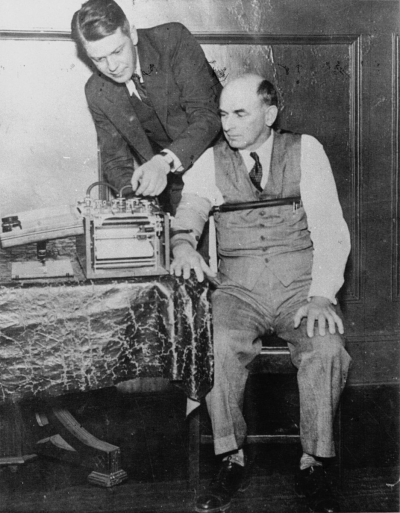A polygraph, popularly referred to as a lie detector test, is a device or procedure that measures and records several physiological indicators such as blood pressure, pulse, respiration, and skin conductivity while a person is asked and answers a series of questions. The belief underpinning the use of the polygraph is that deceptive answers will produce physiological responses that can be differentiated from those associated with non-deceptive answers; however, there are no specific physiological reactions associated with lying, making it difficult to identify factors that separate those who are lying from those who are telling the truth. Polygraph examiners also prefer to use their own individual scoring method, as opposed to computerized techniques, as they may more easily defend their own evaluations.In some countries, polygraphs are used as an interrogation tool with criminal suspects or candidates for sensitive public or private sector employment. US law enforcement and federal government agencies such as the FBI, NSA, and the CIA and many police departments such as the LAPD and the Virginia State Police use polygraph examinations to interrogate suspects and screen new employees. Within the US federal government, a polygraph examination is also referred to as a psychophysiological detection of deception (PDD) examination. The average cost to administer the test in the United States is more than $700 and is part of a $2 billion industry.Assessments of polygraphy by scientific and government bodies generally suggest that polygraphs are highly inaccurate, may easily be defeated by countermeasures, and are an imperfect or invalid means of assessing truthfulness. A comprehensive 2003 review by the National Academy of Sciences of existing research concluded that there was "little basis for the expectation that a polygraph test could have extremely high accuracy." The American Psychological Association states that "[m]ost psychologists agree that there is little evidence that polygraph tests can accurately detect lies."The control question test, also known as the probable lie test, was developed to overcome or mitigate the problems with the relevant-irrelevant testing method. Although the relevant questions in the probable lie test are used to obtain a reaction from people who are lying, the physiological reactions that distinguish lies may also occur in innocent individuals who fear false detection or feel passionately that they did not commit a crime. Therefore, although a physiological reaction may be occurring, the reasoning behind the response may be different. Further examination of the probable lie test has indicated that it is biased against innocent subjects. Those who are unable to think of a lie related to the relevant question will automatically fail the test.
Leonarde Keeler (October 30, 1903 – September 20, 1949) was the co-inventor of the polygraph. He was named after the polymath Leonardo da Vinci, and preferred to be called 'Nard.' He was a Berkeley high school student and amateur magician. He was captivated by John Larson's machine - his so-called 'cardio-pneumo psychogram,' capable of detecting deception, and worked on it to produce the modern polygraph.

1935Feb, 2
Leonarde Keeler administers polygraph tests to two murder suspects, the first time polygraph evidence was admitted in U.S. courts.
Choose Another Date
Events on 1935
- 26Feb
Treaty of Versailles
Adolf Hitler orders the Luftwaffe to be re-formed, violating the provisions of the Treaty of Versailles. - 16Mar
Treaty of Versailles
Adolf Hitler orders Germany to rearm herself in violation of the Treaty of Versailles. Conscription is reintroduced to form the Wehrmacht. - 25May
Big Ten Conference
Jesse Owens of Ohio State University breaks three world records and ties a fourth at the Big Ten Conference Track and Field Championships in Ann Arbor, Michigan. - 25Jun
Soviet Union
Diplomatic relations between the Soviet Union and Colombia are established. - 15Sep
Swastika
Nazi Germany adopts a new national flag bearing the swastika.

 English
English  español
español  français
français  português
português  русский
русский  العربية
العربية  简体中文
简体中文 